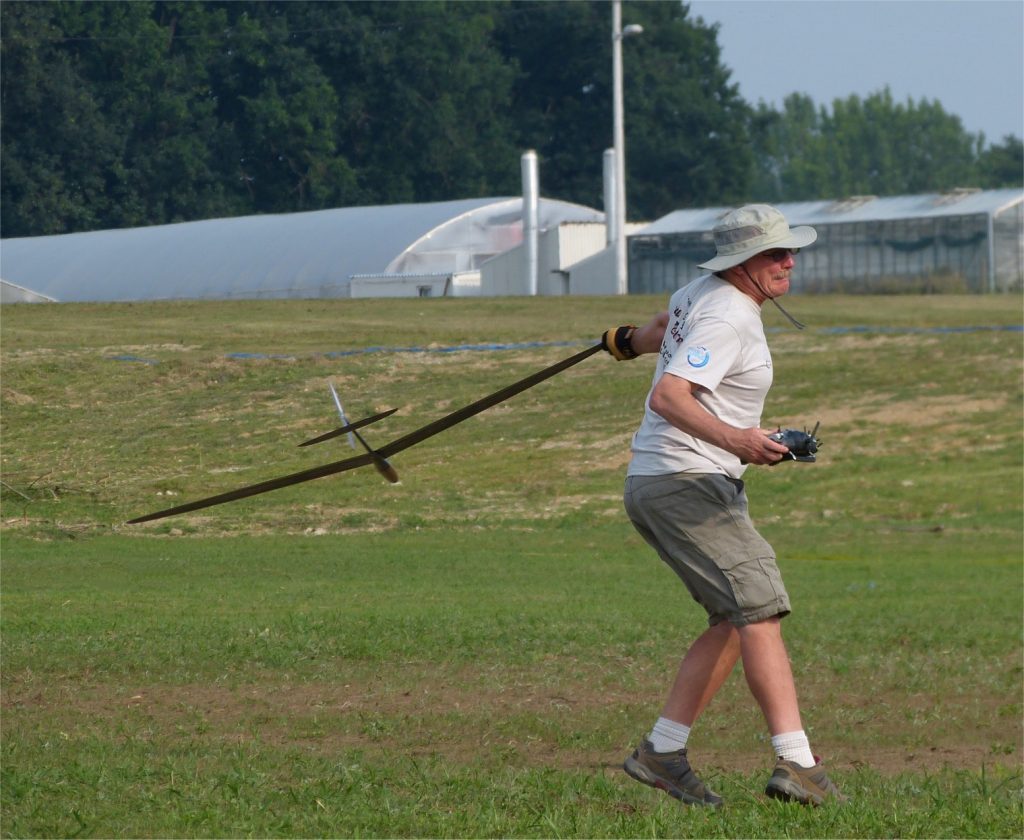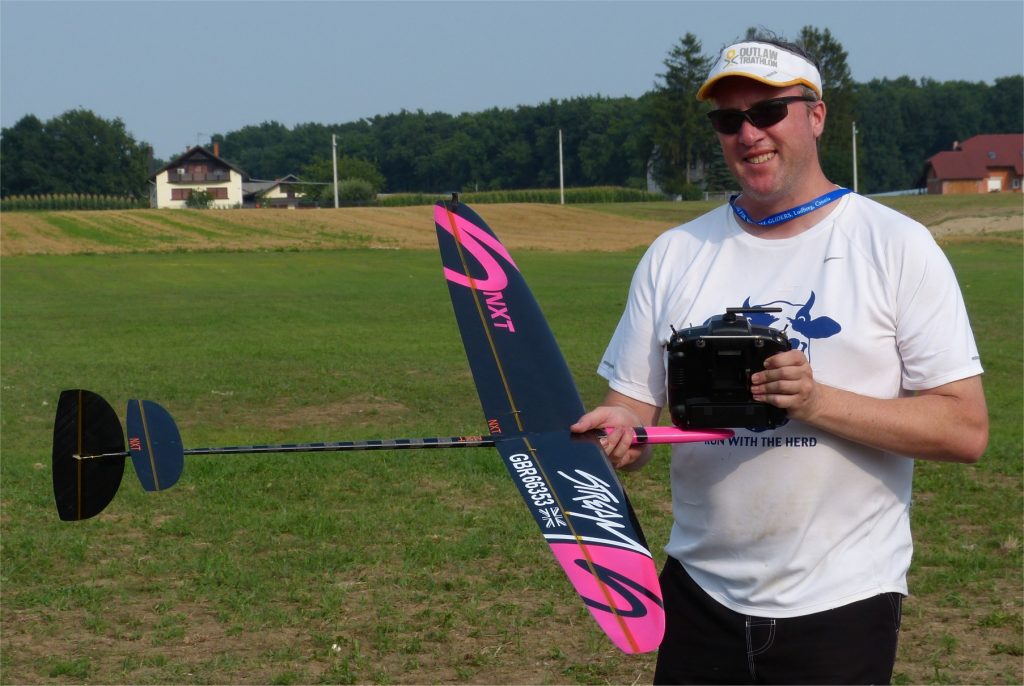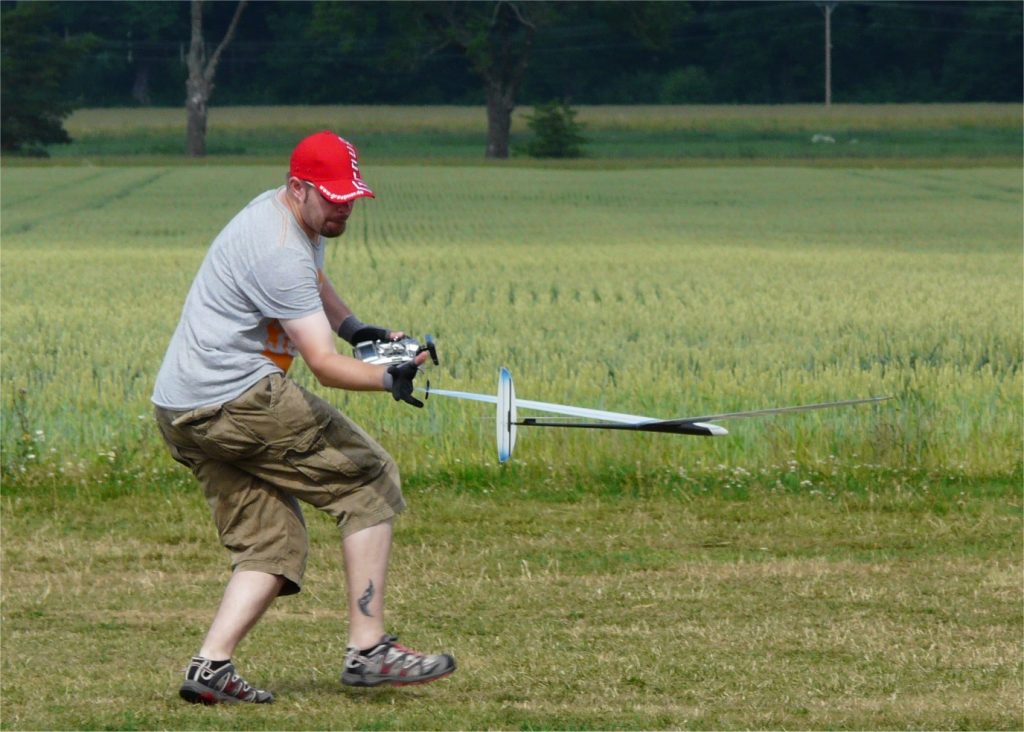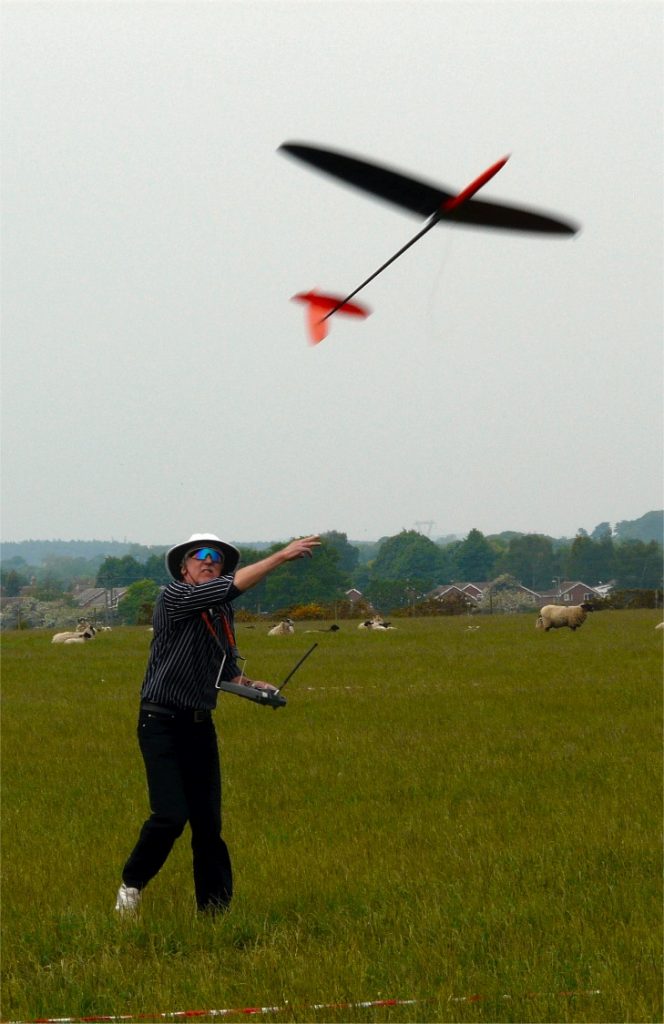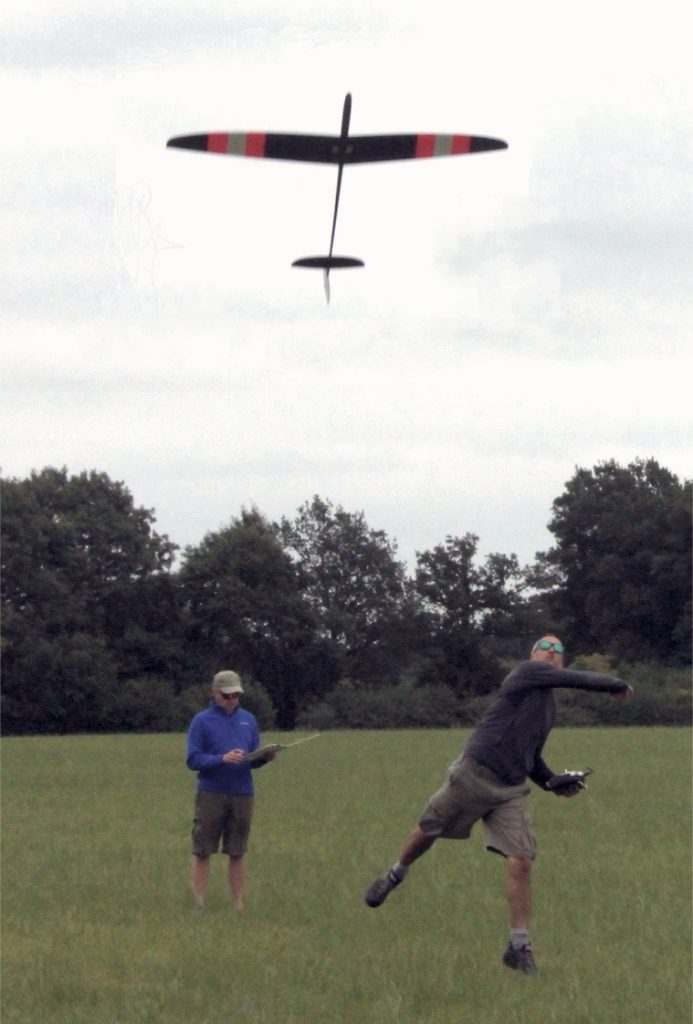Many thanks to Mike Fantham for agreeing to provide the content of this page
Mike spent 40 years competing in free flight and was F1A (Free Flight Glider) World Champion in 1993. Since 2006 he has concentrated on r/c hand launch and, as well as competing himself at top level, was UK F3K Team Manager 2011-2018.
Hand launched thermal soaring gliders
Simply the purest form of radio-controlled thermal soaring – you just need a transmitter a model and a small field. Models are typically 1.5 metre span or less and will fit fully-assembled into most cars. Remove the wing and you can transport them by bicycle. Little or no assembly time on the field and you will get more flying time per field time than any other glider type. More fields become available to you and, for casual flying/training, you can spend less time travelling and more time flying. Popping down the road for a quick session is a practical option.
History
Hand-launched, radio-controlled model gliders, flown from a flat field to soar in thermals, have been around for a long time. Models were held by the fuselage and launched like a javelin with an ‘overarm’ type of throw. A good flyer could get 45 second flights without thermal assistance.
Discus launching – a revolution
Around the turn of the century, a new throwing technique was developed in the Seattle area where the model was held by a wing tip and, arm outstretched, the flyer rotated before release. Durations were very soon 2-3 times better and the technique proved to be less physically demanding. There are many videos on the web showing the launch technique – here’s a post-World Champs launching bonanza from Denmark 2013. In this case, the flyers are not controlling the model the owner is!
How to get involved
UK Discus Launched Glider (DLG) flyers congregate on the British Association of Radio Controlled Soarers (BARCS) Forum:-
There, you can ask questions, pick up information and even enter events. There are also regular challenge events for you to try – at your local field in your own time – honesty implied!
Want to ‘dip your toe in the water’?
The BMFA organise ‘Come and Try’ DLG events from time to time – keep an eye on the BMFA website and the BARCS forum. You can also come along to most contests but flyers will be busy a lot of the time. Check with the organiser first via the BARCS Forum.
International recognition
The international class for hand-launched gliders is called F3K. There is a span limit of 1.5 metres and the contest is flown with groups of flyers going head-to-head in 10-minute periods with specific duration-based tasks to complete. You need to be aware of what’s happening in the air around you – where the thermals are and understand the best way to optimise your score. Precise flight times and rapid catch and relaunch skills are required as well as good soaring skills!
On the web
There is a Wikipedia page on DLG and F3K models which provides good background information and there are lots of other sites and forums. A Frenchman, Pierre Meunier, has many instructional videos on the web – here he is on launch technique: –
How much?
Like any specialised class, high-performance models can seem expensive (£500 to £700), but you can buy smaller and budget DLGs or get second-hand models to get started for less.
Some UK suppliers of F3K and smaller DLG models are: –
- Hyperflight – https://www.hyperflight.co.uk/
- Superfly – https://www.superfly.online/
- T9 HobbySport – https://www.t9hobbysport.com/
Used models come up in the For Sale / Wanted section of the BARCS forum from time to time – and this can be a more affordable option.
Competitions
We have a friendly, competitive BMFA F3K competition scene in the UK. We use our events through the season to select BMFA teams to represent the country in World and European Championships.
Whilst F3K models offer the possibility of high-level competitions, they are equally at home on the local flying field where their size, convenience and the fact they don’t need any launching equipment, means you get a lot of actual flying done during each session.
Why not get involved?
With a DLG you really get to explore the “river of air” in which we fly. It doesn’t take much effort to launch one – most people can do it all day without ill effect. Once you’re up there you begin the challenge of working lift to stay aloft before flying the glider back to your hand, all things going well!
DLG offers the best flying to ‘hassle’ ratio of any RC glider class – no winch, no towing, no motor batteries and no complex field layout. Just take the glider, the transmitter and your urge to soar to the flying field and let the fun begin.
Mike Fantham


